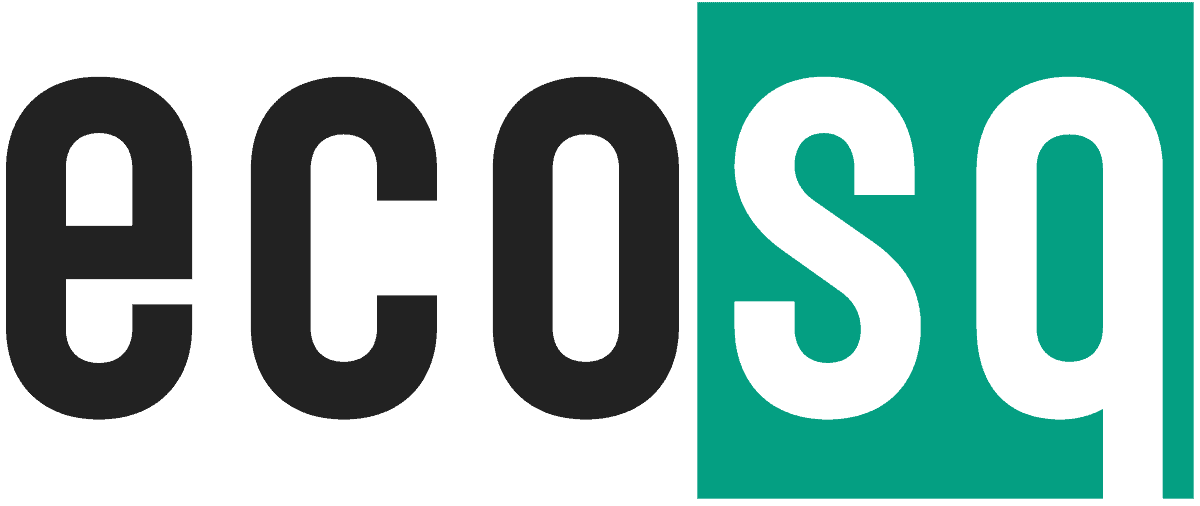Open Source Green Building Design: A Comprehensive Guide to Building a Sustainable Future
This article was previously published in our newsletter. The content may no longer be up to date.
In an age of climate crisis, open source green building design offers immense potential for creating an environmentally sustainable future. This comprehensive guide explores how open source architecture tools empower designers to construct eco-friendly, energy-efficient buildings.
Introduction
The building and construction industry accounts for 39% of global CO2 emissions. As environmental consciousness grows, architects and builders are pivoting to sustainable design practices. This is where open source green building design comes in.
Open source architecture software promotes collaboration, transparency, and accessibility. When combined with green building techniques, these tools help construct net zero energy structures efficiently. This guide will discuss:
- The role of open source in sustainable architecture
- Key aspects like energy modeling, passive design, and renewable energy integration
- Sustainable material selection using open source tools
- Case studies of pioneering open source green buildings
- Benefits and future trends in open source sustainable design
Follow along for insights on how open source software is building a greener future.
The Synergy Between Open Source and Green Building Design
Open source aligns perfectly with sustainable architecture. Both aim to be transparent, collaborative, and focused on the greater good.
Green building design tries to create energy efficient structures with minimal environmental impact. Similarly, open source values accessibility and advancing knowledge.
This ethos has led to powerful architecture software that facilitates:
- Energy modeling to optimize efficiency
- Simulation for passive heating and cooling
- Integration of renewable energy sources like solar PV
- Analysis of materials’ sustainability through LCAs
Subsequently, open source has become integral to modern green building design. It provides the tools to construct futuristic net zero energy buildings.
Open source architecture software makes sustainable design easier and more accessible. It enables evidence-based decision making through accurate simulations. This empowers designers to create environmentally friendly buildings.
Optimizing Energy Efficiency with Building Energy Modeling
A core principle of green architecture is enhancing energy efficiency. Heating, cooling, and lighting account for a massive chunk of a building’s energy use.
Building Energy Modeling (BEM) uses simulation to forecast a structure’s energy performance. This allows architects to identify inefficiencies and rectify them pre-construction.
Main Benefits of Building Energy Modeling:
- Predicts energy consumption patterns.
- Uncovers areas of poor thermal performance.
- Allows testing of efficiency measures through virtual modeling.
- Provides data to right-size HVAC and lighting systems.
- Helps achieve green certification like LEED.
Multiple open source BEM tools exist. Let’s look at two prominent options:
Open Source BEM Software:
EnergyPlus
- Created by the US Department of Energy.
- Models heating, cooling, lighting, ventilation, water use.
- Very detailed simulations for accurate predictions.
- Integrates with OpenStudio for graphical interface.
- Used widely for optimizing energy efficiency.
DesignBuilder
- Easy to use interface for architects.
- Quickly creates geometry including curved surfaces.
- Advanced analytical features like computational fluid dynamics.
- Models passive design, daylighting, and more.
- Exports results to Climate Studio for visualization.
These are just two examples of open source BEM tools facilitating efficiency. With virtual modeling, teams can collaborate to build ultra low-energy green structures.
Passive Design for Energy Efficiency
Passive techniques use natural energy sources for heating, cooling, and lighting. This further boosts efficiency by reducing active system use.
Common passive strategies include:
- Solar heating: Orienting windows and placing thermal mass to trap solar energy.
- Natural ventilation: Allowing strategic airflow through operable windows or vents.
- Daylighting: Designing skylights, windows, and reflectors to use sunlight for interior lighting.
- Evaporative cooling: Using vegetation and water bodies to cool air through evaporation.
- Super insulation: Heavily insulating the building envelope to reduce heat gain/loss.
Open source tools like DesignBuilder simulate these strategies. Architects can virtually model sunlight penetration, ventilation patterns, and heat transmission.
This helps create zero energy buildings that require minimal artificial heating, cooling, or lighting. Passive techniques also enhance occupant health and comfort.
Harnessing Renewable Energy with Open Source Tools
Once efficiency is maximized, renewable energy helps reduce a building’s carbon footprint. Solar PV and wind turbines can supply on-site clean power.
Open source software assists in feasibility assessments, system sizing, and performance modeling. Let’s examine the role of open source tools for solar and wind:
Modeling Solar Potential
Solar photovoltaics generate electricity from sunlight. Open source PV modeling tools like PVWatts help with:
- Estimating solar potential at a site based on location, weather data and system factors.
- Determining the optimal size of a PV system to match energy consumption.
- Simulating hourly and monthly power generation to predict output.
- Designing grid-connected systems and calculating feed-in tariffs.
This enables informed decisions about integrating solar power as a sustainable energy source.
Analyzing Wind Energy Viability
For harnessing wind energy, open source software like OpenWind provides:
- Wind resource assessment using historical weather data.
- 3D modeling of terrain and obstacles to map wind flow.
- Detailed aerodynamic simulations to evaluate turbine designs.
- Modeling of turbine layout options to maximize wind farm energy generation.
These analytical features help determine if wind energy is feasible for a site based on wind patterns. Open source tools drive data-backed decisions about incorporating wind power.
Selecting Sustainable Building Materials
The materials used in construction also impact a building’s sustainability. Open source software helps choose eco-friendly options through Life Cycle Assessments.
Benefits of Material Life Cycle Assessments:
- Calculate environmental impacts from raw material extraction to disposal.
- Compare impacts across material options like wood vs concrete.
- Identify greener materials with lower embodied energy.
- Select healthier materials that don’t emit VOCs.
- Make data-driven decisions aligned with green goals.
OpenLCA is a prominent open source LCA software. Material databases like Ecoinvent provide LCA data to inform selection.
For instance, LCAs help choose structural systems like mass timber over steel for lower carbon footprint. Open source tools enable holistic evaluation of materials.
Case Studies of Open Source Green Buildings
Real-world projects showcase the power of open source tools to enable sustainable design. Here are two case studies:
The Bullitt Center, Seattle
- 50,000 sqft urban office building, opened in 2013.
- Uses EnergyPlus and OpenStudio for energy modeling and simulation.
- Achieved net zero energy status through passive design and solar PV.
- Powered exclusively by a 9.7kW solar array since 2017.
- Designed for natural ventilation, sunlight, recycled rainwater use.
- First commercial building to earn Living Building Challenge certification.
Pixel Building, Australia
- Mixed-use commercial building built in Melbourne in 2010.
- Leveraged DesignBuilder for computational fluid dynamics simulations.
- Achieved a 5 Star Green Star rating for sustainability.
- Incorporates passive ventilation, automated sun shades, green roofs.
- Rooftop solar PV provides 10-15% of energy demand.
- Overall 60% more energy efficient than a typical commercial building.
These projects highlight the abilities of open source tools to create highly sustainable structures.
Benefits of Open Source Green Building Design
Using open source architecture software for green design brings multiple advantages:
- Cost Efficiency: Open source tools significantly reduce costs compared to proprietary software. This makes sustainable design more accessible.
- Collaborative Workflow: Stakeholders can collectively simulate design options in an integrated manner not possible with commercial tools.
- Transparent Decisions: Open source provides transparent access to modeling data. This empowers objective, data-driven decisions.
- Customizability: Open source tools can be customized to improve workflows. Users can also contribute new features.
- Accessible Education: Enables hands-on learning about green building techniques through freely available tools.
Future Trends and Challenges
The future seems bright for open source green building design, with some intriguing trends on the horizon:
- AI and Generative Design: Machine learning algorithms can rapidly optimize designs for sustainability goals and even generate building geometry.
- Cloud Computing: Web and cloud-based open source tools improve collaboration and access to computing resources.
- Urban-Scale Modeling: Simulating collections of buildings and even entire neighborhoods or cities.
- IoT and Smart Buildings: Integration with Internet of Things data for real-time energy management.
However, some challenges remain for open source to become ubiquitous:
- Interoperability Issues: Open source tools sometimes have compatibility problems or lack integration.
- Data Accuracy: Quality assurance processes are needed to ensure reliable data inputs and modeling accuracy.
- Mainstream Adoption: Many designers still default to commercial tools and need education on open source benefits.
- Development Resources: Adequate funding and community contributions are required for continued advancement of open source projects.
Key Takeaways on Open Source Green Building
To conclude, here are the major takeaways from this guide:
- Open source architecture software synergizes perfectly with green building design, aligning with principles like transparency and collaboration.
- Powerful open source tools facilitate energy modeling, passive design strategies, renewable energy integration, and material sustainability assessments to enable net zero energy structures.
- Open source enables cost-effective, customizable, data-driven design decision making. Real-world projects highlight impressive sustainability gains.
- Future trends like AI, cloud computing, and IoT integration will further revolutionize open source green building capabilities.
- Challenges around interoperability, data accuracy, mainstream adoption, and development resources must be addressed.
- Overall, open source architecture software plays a transformative role in building a sustainable future and mitigating the construction industry’s environmental impact.
Conclusion
This guide outlined the immense potential of open source tools for green building design. By embracing open source principles, the architecture community can collaboratively develop software that facilitates the construction of eco-friendly and energy efficient structures.
Powerful open source applications already enable net zero energy building design through detailed energy modeling, simulation of passive systems, integration of renewables, and selection of sustainable materials.
As open source continues to evolve, it will become fundamental to mainstream sustainable architecture. This synergy generates hope for reducing the building industry’s massive carbon footprint and achieving a greener future.







